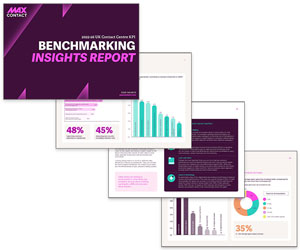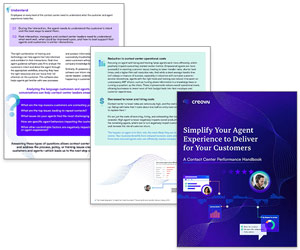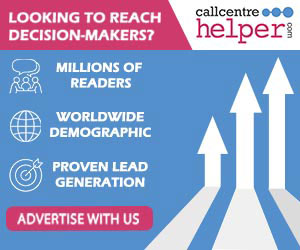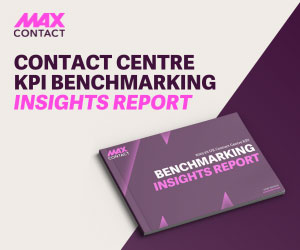Wallboards go back to the earliest history of automatic call distributors (ACDs), providing an at-a-glance situation feed, literally on the wall, for contact centre workers.
However, their relevance is now being called into question – with technology and working practices continuing to evolve, and our latest Call Centre Helper research showing a 10% drop in usage rates in almost as many years.
So, have wallboards had their day? We asked the experts to find out…
“They Can Drive a Collective Sense of Purpose… Why Wouldn’t You Want That?”
Wallboards have definitely not had their day in the contact centre! Quite simply because they’re very easily consumable by everybody who looks at them.
They operate on a single source of truth too! So, everybody looking at it is seeing the same thing at the same time, completely in the moment.
This can result in some really positive outcomes, such as everyone seeing call volumes blow up at the same time, and a collective sense of purpose to think “Right, let’s do something about this!”
As a contact centre leader, why wouldn’t you want that as part of your toolkit?
Contributed by: Maria McCann, Co-Founder, Neos Wave
“They Still Have a Place in High-Volume, On-Premise Environments”

In most modern contact centres – especially those with remote or hybrid teams – the classic wallboard is becoming obsolete.
Real-time visibility still matters, but wallboards don’t meet today’s needs: they’re not personalized, they don’t scale to remote environments, and they lack context.
Instead, performance data is now delivered through role-specific dashboards, alerts, and AI-driven insights that are far more actionable.
That said, wallboards may still have a place in high-volume, on-premise environments – think large BPOs or tightly co-located sales teams – where ambient visual cues help drive team coordination.
But even in those settings, they’re most effective when paired with deeper, individualized insights. So yes, they can have a place – but not as the primary performance tool any more.
Contributed by: Tatiana Polyakova, COO, MiaRec
“If They Aren’t Helping Employees Understand What to Do Differently, They Should Be Confined to Relics of the Past”

I think the old-school wallboard is irrelevant now – particularly those where the screen quickly changes to a sea of red when SLAs are being breached and individuals are “named and shamed”. It’s worse than useless!
What matters now more than ever is real-time visibility.
So, if you’re using a scoreboard-style wallboard today, you really need to replace that with tools that are going to help guide leaders and frontline associates alike towards what they should be doing next or be prioritizing in that moment.
If a wallboard isn’t helping employees understand “What should I be doing differently right now?” then I think it’s a relic of the past.
Contributed by: Justin Robbins, Founder & Principal Analyst at Metric Sherpa
“Old Physical Wallboards Have Been Superseded by More Flexible and Highly Functional Digital Displays”

The modern call centre operates as a distributed environment, with remote workers spanning the globe and servicing various time zones, as part of a single service provision for companies providing support to their customers and suppliers.
With such a distributed call centre architecture, the old physical wallboards have been superseded by more flexible and highly functional digital displays.
These may use a physical panel or additional screen in the contact centre, but can also be displayed on contact centre leaders’ and agents’ screens in home offices.
Not only that, but the sophisticated reporting available in the modern contact centre surpasses the capabilities of the old wallboard models to display information.
Contributed by: Tim Seabrook, Advanced Services Solution Architect, Enghouse Interactive
“Wallboards Empower Agents With the Information They Need to Use Their Time Most Effectively”

The whole point of a wallboard is to involve the agent in the process and success of the operation, so that they can make decisions with some autonomy about how to use their time most effectively.
For example, if they can see there are a lot of calls in queue, they can perhaps decide to do some of their after-call work at a later time (when volumes are lower) and take the next call sooner instead. When enough agents do that, it can have a massive impact on your overall performance.
But if that information wasn’t up on the wallboard for them to see in the first place, they wouldn’t be in a position to make that decision, right? They’d have no idea! So, wallboards definitely still have their place in my opinion.
Contributed by: Adam Boelke, Founder of the Alignment Advantage Group, and author of the “7 Cs to Success” mastermind course on leadership & culture
“Wallboards Must Evolve to Integrate Qualitative Measures That Truly Matter to the Customer Experience”

Wallboards absolutely still have a place in contact centres, especially from a cultural and team alignment perspective. They help promote transparency, avoid siloed working and offer visibility of key performance metrics.
…But traditional formats can be outdated and often demotivating!
Agents should be focused on what they can actually influence, and that’s better achieved through personalized dashboards on their desktop in addition to wallboards, that surface relevant, real-time insights.
There are more subtle, intelligent ways to alert teams when thresholds are being breached!
Wallboards also need to evolve and should integrate qualitative measures that matter to customer experience, not just answer rates.
Blending CCaaS data with survey results, CRM inputs, and conversational intelligence provides far more meaningful insight.
The goal shouldn’t just be visibility, but actionable, context-rich feedback that empowers agents and connects their work to outcomes that matter.
Contributed by: Lewis Gallagher, Senior Solutions Consultant, Netcall
“They Offer Value to Supervisors Who Need an At-A-Glance View Across Their Teams”

Modern CX platforms provide real-time dashboards with more metrics, as well as being able to display traditional wallboard views if required.
Increasingly, we see that most agents are focused on their individual screens and rely on personalized dashboards tailored to their role and current tasks.
This evolution parallels the consumer world’s shift from TVs to personal devices: wallboards haven’t died, they’ve transformed into smarter, more dynamic tools.
That said, wallboards still offer some value, particularly for supervisors and managers who need an at-a-glance view across their teams.
Contributed by: Martin Taylor, Co-Founder and Deputy CEO, Content Guru
“They Remain Valuable When Used to Foster Meaningful Behaviours – Rather Than Enforce Outdated Operational Metrics”

Wallboards remain valuable when used to foster meaningful behaviours rather than enforce outdated operational metrics.
KPIs like call queues may be essential for planners but have little behavioural benefit for advisors. This is because displaying such metrics can actually drive less helpful advisor behaviours.
For example, showing real-time queue data could stress agents, prompting them to rush calls or disengage, neither of which benefits the customer experience.
To keep wallboards relevant, leaders really need to think about WHAT they show!
Contributed by: Danny Wareham, Founder & Director of Firgun
“There’s No Point in Having Them If the Data Shown Isn’t Regularly Updated”

Wallboards have their place as a visual way to share information with everyone on the contact centre floor, and some people do still use them as a motivation tool too – but it’s a matter of perspective.
I feel they are slightly old-fashioned – particularly if you’ve got a wallboard which is not being updated regularly.
Quite frankly, if the data is inaccurate or a few hours old, what’s the point of having it?
Contributed by: Matt Riley, Experienced Contact Centre Professional
“They’re Still Effective If Leaders Visibly Engage With Them”

Even when I had good analytics that the agents could see on their own computers, I found they wouldn’t look at them very often. This is where I believe wallboards still bring the compelling social factor.
Particularly when, as a leader, I would go out and look at them.
Agents would see me looking, and that’s all that would have to happen to send a very clear message of “This is interesting to me, I care about what you’re doing, and these statistics matter”.
Contributed by: Nate Brown, Head of CX Advisory for Metric Sherpa and Co-Founder of CX Accelerator
“Virtual Wallboards Have Replaced the TVs Up in the Call Centre”

The traditional TV-style wallboard is no longer fit for purpose. This is because most contact centres now operate in a hybrid environment, where not everyone is in the office all day, every day.
It just doesn’t work to have screens up on the contact centre floor that only some people can see.
However, what I have seen is a shift to the virtual wallboard – so it’s the same style of screen, but it’s available on everybody’s PC, where agents can click on a tab to see that they are “in green” along with other useful insights – including who is working that shift.
It brings a sense of togetherness even when people aren’t physically sitting next to each other as often.
Contributed by: Alex McConville, Contact Centre Consultant and author of ‘Diary of a Call Centre Manager’
Do You Still Have Wallboards Up in Your Contact Centre?
Join our LinkedIn community and let us know.
For more great insights and advice from our panel of experts, read these articles next:
- What Are Intelligent Contact Centres Doing Right Now?
- 15 Proven Tactics to Reduce Abandon Rate
- Top Tips for Digital Channels – Forecasting and Scheduling
- Top Tactics to Improve First Contact Resolution (FCR)
Author: Megan Jones
Reviewed by: Xander Freeman
Published On: 25th Jun 2025
Read more about - Technology, Adam Boelke, Alex McConville, Content Guru, Danny Wareham, Employee Engagement, Enghouse Interactive, Justin Robbins, Lewis Gallagher, Maria McCann, Martin Taylor, Matt Riley, Metrics, MiaRec, Nate Brown, Netcall, Tatiana Polyakova, Top Story, Wallboards











































